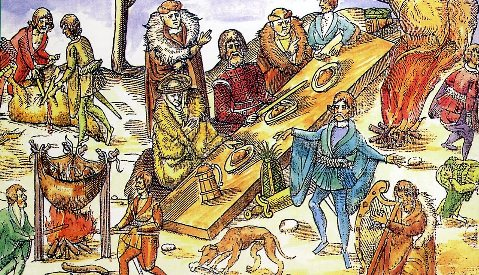David Rolfe, a British filmmaker and former atheist, embarked on a journey to debunk one of history's most enigmatic religious artifacts—the Shroud of Turin. Initially, his goal was to create a documentary that would offer a logical explanation for the mysterious bloodstained image of a man, believed by many to be Jesus Christ, that appears on the linen cloth. However, this journey led to a profound personal transformation. Convinced by the evidence he uncovered, Rolfe converted to Christianity and has since dedicated much of his work to exploring and defending the authenticity of the Shroud.
The Shroud of Turin is a 14-foot-long linen cloth that bears a faint image of a man who appears to be approximately 5'6" tall, with sunken eyes and wounds that correspond with those inflicted upon Jesus during his crucifixion. Rolfe, initially skeptical, was so moved by his findings that he offered a $1 million prize to anyone who could replicate the image without using ink, paint, or other artificial means. His challenge remains unmet.
The authenticity of the Shroud has been a topic of heated debate for decades. In the 1980s, carbon dating tests appeared to place the origin of the cloth in the Middle Ages, well after the time of Jesus. This led many to dismiss it as a medieval forgery. However, recent analyses using advanced X-ray techniques have challenged these earlier findings, suggesting that the cloth might indeed date back to the time of Christ.
Rolfe argues that the 1980s research focused on a small section of the Shroud that had been repaired between 1200 and 1400 AD due to damage from frequent handling during religious ceremonies. This, he believes, led to an inaccurate dating result. He has offered the British Museum, which played a role in the initial analysis, $1 million to recreate the Shroud's distinctive image, but so far, no one has succeeded.
In his most recent documentary, Who Can He Be?, Rolfe expresses his firm belief in the Shroud’s authenticity, stating, "I am convinced [the Shroud of Turin] is authentic; I personally have no doubt." His offer of a $1 million prize remains open to anyone who can replicate the Shroud's unique characteristics, particularly the image of a crucified man that appears on the cloth without the use of pigments or dyes.
For Rolfe and many others, the Shroud's image represents a miraculous imprint left by the resurrected body of Jesus over 2,000 years ago. The cloth shows no evidence of ink or dye, which would suggest it was a fake, and those who attempt to reproduce it must match the bloodstains and the chemical composition of the blood, including hemoglobin and bilirubin, found on the Shroud.
Despite the challenge, no one has claimed the prize. Rolfe notes that once people understand the complex image characteristics, they quickly realize that reproducing it is beyond current capabilities. Since the 1980s, more than 170 peer-reviewed academic papers have been published on the Shroud, with many supporting its authenticity.
In the 1970s, tests were conducted to determine whether the images were created through painting, scorching, or other methods, but none of these explanations were conclusive. Further research in 2017 by experts at the Institute of Crystallography suggested that the Shroud contained the blood of a torture victim, identifying substances like creatinine and ferritin, which are typically found in those who have experienced severe trauma. These findings challenge the notion that the Shroud was a medieval forgery.
Rolfe’s fascination with the Shroud deepened when he commissioned Dr. Robert Bucklin to perform an autopsy based on the Shroud's images. Dr. Bucklin's report, published shortly before his death in 2001, provided a detailed analysis of the wounds visible on the Shroud, consistent with the injuries described in the crucifixion of Jesus. The report noted a large bloodstain over the right pectoral area, indicating postmortem blood flow from a wound, likely caused by a sharp instrument, such as the spear used by a Roman soldier to ensure Jesus was dead.
The autopsy also identified three distinct lines on the back of the figure on the Shroud, corresponding to the marks left by a Roman flagrum, a whip with three leather straps tipped with lead balls. This detail, according to Rolfe, allows even the height of the person who inflicted the flagellation to be estimated based on the marks on the cloth.
Rolfe’s latest film, Who Can He Be?, has had a profound impact on him. He draws parallels between the Shroud's image and a photographic negative, created by a burst of energy, much like the process of exposing photographic paper to light. Rolfe believes that the Shroud’s image was formed by an intense burst of energy, possibly during the moment of Jesus' resurrection, leaving only the surface of the cloth scorched in a way that modern science cannot fully explain.
Rolfe’s journey from skepticism to belief underscores the enduring mystery of the Shroud of Turin. Despite decades of scientific inquiry, the Shroud continues to captivate and challenge, leaving both believers and skeptics in awe of its enigmatic origins. Whether it is the genuine burial cloth of Jesus or not, the Shroud of Turin remains a powerful symbol of faith and a testament to the enduring quest for understanding one of history's most sacred relics.









